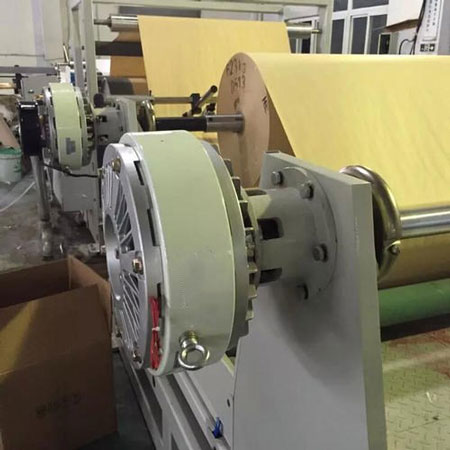How to Adjust the Torque of the Magnetic Particle Brake?
Torque is the basic load form of the transmission shaft of various working machinery. It is closely related to the working capacity, energy consumption, efficiency, operating life and safety performance of power machinery. The measurement of torque is of great significance to the confirmation and control of the load of the transmission shaft, the strength design of the system working parts and the choice of the prime mover capacity are of great significance. During the normal operation of printing machines, packaging machines and other machinery, according to different tension (torque) needs, the torque of the magnetic particle brake and clutch is adjusted accordingly to meet the requirements.
How does the printing machine adjust the torque of the magnetic particle brake?
The rated voltage of the magnetic particle clutch brake is DC24V, and the normal torque is 1Nm ~ 400Nm. The main torques of ATO magnetic particle brake are 6Nm, 15Nm, 25Nm, 50Nm, 50Nm, 100Nm, 200Nm, 400Nm. It utilizes the characteristics of magnetic particle to transfer torque, provided that the current is supplied. After a number of authoritative technical tests and experiments, it has been found that the relationship between the exciting current and the transmitted torque is basically linear. Therefore, it seems to be very simple and convenient to adjust the torque of the magnetic particle clutch brake. As long as the magnitude of the exciting current is changed, the torque of the magnetic particle clutch brake can be easily adjusted. In addition, adjusting the torque of the magnetic particle clutch brake usually requires a tension controller (manual or fully automatic). The tension controller outputs a controllable DC0 ~ 24V or 0 ~ 4A for driving the magnetic particle clutch brake, thus realizing the constant tension control of the winding/unwinding process.
So, what role does torque play in magnetic particle brake?
When the revolving speed of the driven part of the magnetic particle brake is higher than the driving part, there are the following two cases:
1. When the magnetic particle brake is energized, the driven part will drive the driving part to rotate at this time, and the resistance at this time is the component of gravity of the driving part;
2. In the case of power failure of the magnetic particle brake, the driven part will also drive the driving part to rotate at this time, and the resistance is the component force of the friction of the magnetic particle brake.

